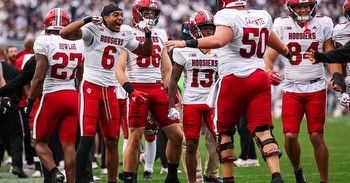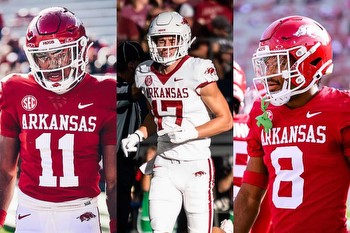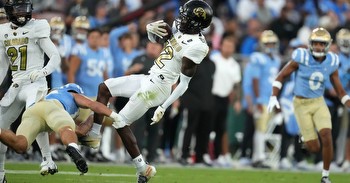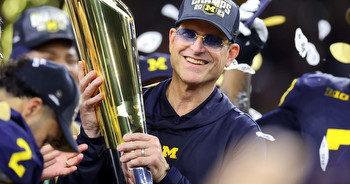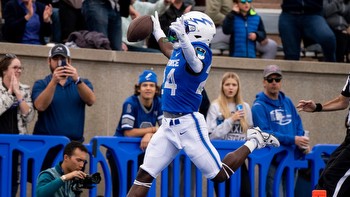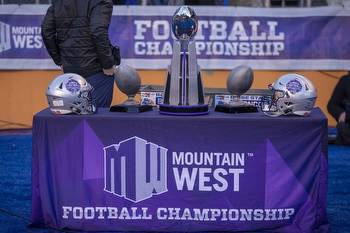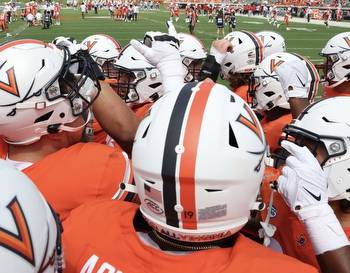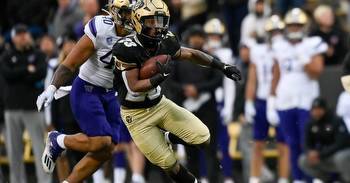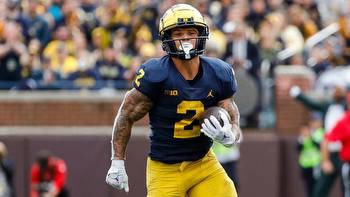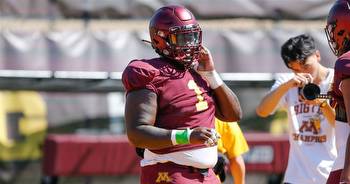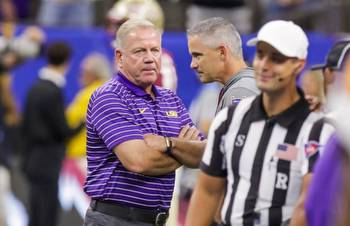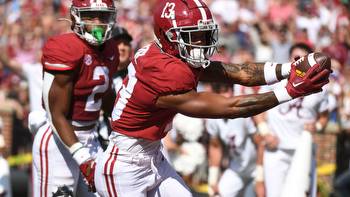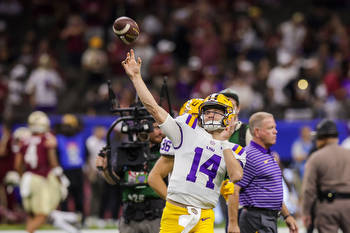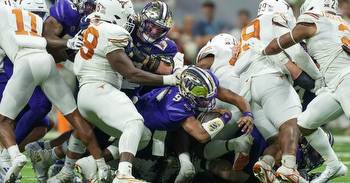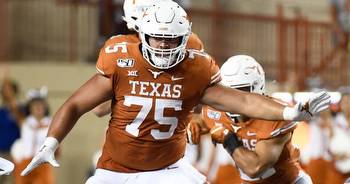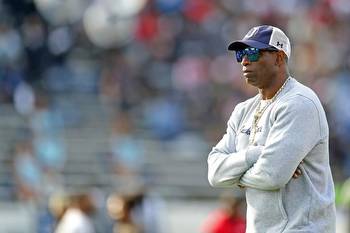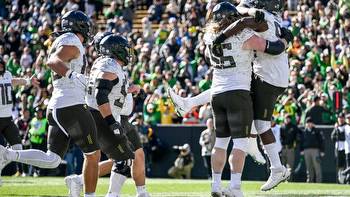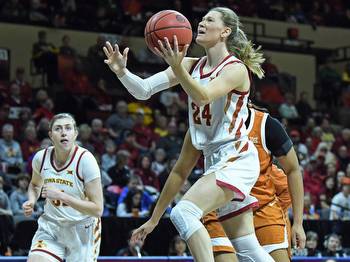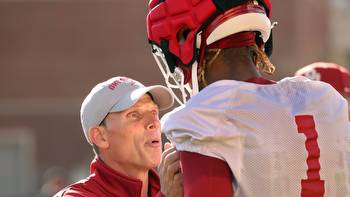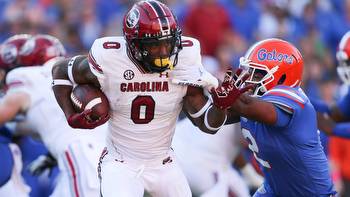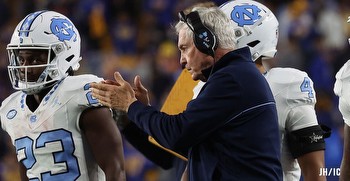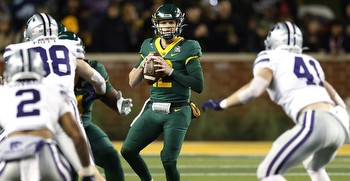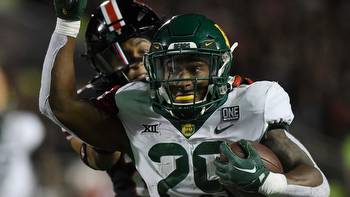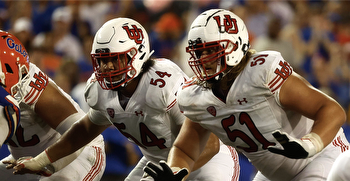Pre-Spring Pac-12 Football Transfer Portal Rankings: Part I
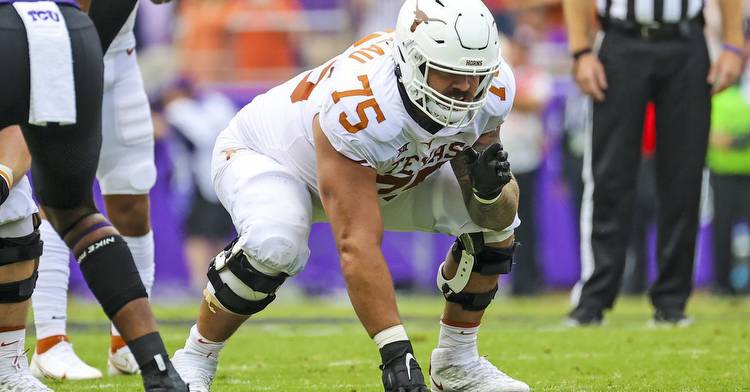
Those that followed the site in December will remember that I tracked as much of the transfer portal movement as it is possible to track and not have it be your full-time job. We’re finally in a position with signing day and the close of the portal entry period several weeks behind us where it’s safe to stop and take stock of what the f*** just happened.
Some of the major recruiting services have their own transfer portal rankings. Everything referenced in this article though is based on my own internal transfer ranking system. There are 3 primary components: how you were ranked out of high school, how you’ve performed on the field, and how long you’ve been in college.
For the recruiting element I use the 247 sports composite rating. If you had a transfer that had never played in college but was a former 5-star you’d probably think they had a better chance at succeeding than a low 3-star that also hasn’t gotten on the field. For on-field performance I use a weighted average of their Pro Football Focus grade. PFF isn’t perfect but it’s the only outlet that offers a single number to judge performance across position groups. If one player consistently gets an 80.0 from PFF and another gets a 60.0, the player getting an 80.0 is likely to be better even if the degree to which that’s the case is up for reasonable debate.
The final component is # of years in college which is important for a few reasons. Let’s go back to the example of 2 players that haven’t played a snap yet. If one of them was transferring after their true freshman season you’d probably chock it up to just having a veteran depth chart in front of them or they didn’t immediately click with the coaching staff. If that was a 4th year redshirt junior that still has never played you’re probably thinking they’re not actually very good to still have never played. On top of that discrepancy, a younger player will have more years of eligibility remaining which is more valuable.
At the end of it all is a number between 0 and 100 (high score this year was a 92.6) that is a final transfer rating. For each team I took the total sum of all their incoming transfers and subtracted the totals for the outgoing transfers to get a single number. The average across all power conference schools was -173 so a team doesn’t necessarily have to be in the positive to have fared okay. There are more transfers out than in at just about all schools. This system tries to make it so that adding a few star players cancels out losing many guys who have never played but that doesn’t always work. I’ll try to provide context when necessary.
12- Stanford Cardinal, -757 points
Additions: 3 with average grade of 55.1; Highest: LB Gaethan Bernadel (from Florida International), 67 points
Departures: 16 with average grade of 57.6; Highest: EDGE Stephen Herron Jr. (to Louisville), 80 points
Last year the far and away loser in this column was Colorado and they ended up as one of the worst Pac-12 teams since the Huskies back in 2008. That’s not a great sign for Stanford who also lost their starting QB to the draft. The Cardinal have been known for their offensive line but almost the entire unit up and left. 4 starters transferred out and ended up at Michigan x2 (79, 65), Oklahoma (79), and Duke (70). Another reserve OL transferred to Central Florida (55). Add on top of that losing 3 defensive starters including their best edge rusher (80) and best safety (78) and it’s pretty bleak.
It’s always hard for Stanford to add bodies through the portal given their admissions process so it shouldn’t be a surprise what their primary targets were: Ivy League offensive linemen. The Cardinal are bringing in a starter from both Harvard (51) and Penn (47) to try to backfill depth along the offensive line. They also added a solid young linebacker from Florida International (67) who will compete for a starting job.
There’s no question though that the net flow of players was a massive drain in talent and new head coach Troy Taylor has his work cut out for him. If they don’t hit on the quarterback then this upcoming year could be extremely rough.
11- Arizona Wildcats, -734 points
Additions: 5 with average grade of 53.0; Highest: DL Tyler Manoa (from UCLA), 67 points
Departures: 23 with average grade of 43.4; Highest: CB Christian Roland-Wallace (to USC), 79 points
Arizona’s total score was almost as bad as Stanford’s but that was at least in part due to some churn at the bottom of the roster. The Wildcats had 15 players transfer out with a score of less than 50 and only the highest of that group (LB Paris Shand, ) has landed at a power conference school. It’s fair to say that Arizona likely upgraded the bottom half of the roster through improved high school recruiting by replacing guys who either never saw the field or were very bad when they did.
But the reason they still fall to 11th is that Arizona also lost some premium pieces. USC raided their roster for a trio of starters including 1st team all-conference WR Dorian Singer (77). That also included starting CB Christian Roland-Wallace (79) and UNLV ended up with starting safety Jaxen Turner (68) who PFF had as their best defender on a very bad defense last season. It’s reasonable to say that Arizona only lost 5 players who were expected to be starters this year out of 23 departures but that’s still a lot.
It seems clear that Arizona’s strategy to replace them was to take highly rated pieces off other Pac-12 rosters that hadn’t quite found their spot. 4 of Zona’s 5 portal additions came from fellow conference teams and all of them were at least a high 3-star out of college. That includes the linebacker pair of former 5-star Justin Flowe from Oregon (51) and UW’s Daniel Heimuli (45). UCLA’s Tyler Manoa (67) is the only add though that has played more than 200 defensive snaps in a season so they’re hoping they can hit the jackpot with at least 2 of the 5 to improve their terrible defense. The odds aren’t exactly in their favor though.
10- Oregon Ducks, -408 points
Additions: 10 with average grade of 72.3; Highest: OL Junior Angilau (from Texas), 92 points
Departures: 22 with average grade of 51.3; Highest: RB Byron Cardwell (to Cal), 81 points
I’m sure if you talked to the average Oregon fan (I’m so sorry if you ever do) they would tell you that Oregon clearly upgraded in the portal despite what the numbers above say. And I don’t know if I’d completely disagree. I generally set the bar at a 60.0 as someone who you should expect to start at their next school. Oregon lost 7 such players, none of whom played more than 336 offensive or defensive snaps last year and added 8 of them. In real terms, they lost 2 starters (plus 5 rotation players) and picked up what should be at least 7 if not 8.
The bigger problem though is that the middle class of Oregon’s roster suddenly disappeared. A lot of guys that filled in playing 50-150 snaps in reserve moved on and were replaced by talented true freshmen. Maybe those departures truly didn’t fit Lanning’s system and their departure is no great loss. But if towards the end of next season Oregon has 2 or 3 injuries in the same position group that depth chart is going to thin out much more quickly.
Still, the Ducks added 2 of my system’s top-7 overall transfers this cycle. Junior Angilau (92) was 4th overall although that requires a little context. Angilau was a 3-year above average starter at Texas but missed all of last year due to injury. I don’t have a way to account for that in my fully numeric system so if he isn’t the same guy post-injury it might not turn out that way.
They also brought in Jordan Burch from South Carolina (90) who is a former 5-star and 3-year starter who was above average on the DL in the SEC. Add in Tysheem Johnson (starting S at Ole Miss, 85), Evan Williams (starting S at Fresno State, 65), Traeshon Holden (starting WR at Alabama, 76), and 2 smaller school players with eye-popping PFF grades (WR Tez Johnson from Troy 71 and OL Ajani Cornelius from Rhode Island 67) and that’s a lot of talent.
A last addendum that Oregon this past Friday reinstated Alabama transfer WR Traeshon Holden after the DA decided not to prosecute in light of body camera footage being released which contradicted initial reports. He had previously been dismissed from the team the day that allegations were brought. As noted in the previous paragraph, he is part of the totals once again for Oregon.
9- Washington State Cougars, -384 points
Additions: 7 with average grade of 52.9; Highest: WR Kyle Williams (from UNLV), 73 points
Departures: 18 with average grade of 41.9; Highest: LB Travion Brown (to Arizona State), 76 points
The initial transfer portal wave combined with graduation essentially wiped out the depth chart at a few positions for Washington State. Linebackers Travion Brown (ASU, 76) and Francisco Mauigoa (Miami, 70) are set to start at other power conference programs next year while star Daiyan Henley graduated. The receiver position was also impacted with De’Zhaun Stribling (Oklahoma St, 59) and Donovan Ollie (Cincinnati, 55) taking their nearly 100 catches, 1,100 yards, and 800 yards elsewhere. Factor in Robert Ferrell graduating and there go the top-3 receivers.
The only other truly devastating loss was starting offensive tackle Jarrett Kingston heading to USC. Otherwise the remaining...13 transfers were mostly depth pieces. Still, it’s not a great sign to lose that many players. Especially when the additions were relatively minimal.
The Cougars tried to rebuild their receiving corps through the portal as their 3 top rated additions all play that position. Kyle Williams (UNLV, 73), Joshua Kelly (Fresno State, 59), and Isaiah Hamilton (San Jose State, 54) are all moving up from the Mountain West to the Pac-12 and we’ll see if they’re able to replace the big shoes left for them. They also tried to restock the linebacker position with Isaiah Paul (Incarnate Word, 51) and Ahmad McCullough (Maryland, 46) but given their scores it shouldn’t necessarily be expected they walk in and start right away.
8- California Golden Bears, -306 points
Additions: 11 with average grade of 52.6; Highest: RB Byron Cardwell (from Oregon), 81 points
Departures: 18 with average grade of 49.2; Highest: RB Byron Cardwell (to Cal), 80 points
Cal QB Jack Plummer (81) didn’t exactly light the world on fire after transferring in from Purdue so it wasn’t exactly a shock to see him be just one and done in Berkeley. It was a surprise though to also see backup Kai Miliner (45) head out to Northern Arizona and leave a void at that spot for Cal. Justin Wilcox also went to the portal to try to fill it picking up Sam Jackson out of TCU (64) who lost out to eventual Heisman finalist Max Duggan and should be the favorite to start at that spot.
Given how bad Cal’s offense has been it isn’t a surprise that most of the losses were on that side. Starting receiver J. Michael Sturdivant (UCLA, 85), O-lineman Ben Coleman (ASU, 81), and tight end Jermaine Terry (OSU, 56) all head to other Pac-12 programs. Backup running backs Damien Moore (Fresno St, 64), DeCarlos Brooks (ASU, 58), and Ashton Hayes (Nevada, 41) are also leaving for other West region programs. That’s a lot of talent drain from a unit that didn’t have a lot of excess talent to spare.
There were some reinforcements gathered though with strong pedigrees. Byron Cardwell (81) looked like a future star at Oregon before getting recruited over in the portal last offseason and now will form a fearsome two-headed monster with stud Jadyn Ott. WR Brian Hightower (Illinois, 74) isn’t quite a 1-to-1 replacement for Sturdivant but should come close. Otherwise the other two major additions came on defense where cornerbacks Nohl Williams (UNLV, 69) and Kaylin Moore (Colorado, 64) each will have a serious chance to start right away.
7- Utah Utes, -76 points
Additions: 5 with average grade of 55.2; Highest: CB Miles Battle (from Ole Miss), 71 points
Departures: 9 with average grade of 39.1; Highest: OL Paul Maile (to BYU), 66 points
Utah is a developmental program generally and haven’t done a lot of “portaling” in recent years. That’s still the case as the 14 combined additions/departures is 11th in the conference. Unsurprisingly for the 2-time reigning conference championship winner there aren’t a lot of major pieces leaving. The only contributor who played more than 200 snaps last year departing is starting lineman Paul Maile (66) who heads to the other side of the Holy War rivalry. Otherwise backup corner Malone Mataele (63) leaving for Utah State is the only departure of consequence. Four linebackers transferred out which hurts the depth but none played much last year which likely explains why they’re leaving.
On the other side there should be a few starters in the incoming group. Miles Battle (Ole Miss, 71) played 350+ defensive snaps each of the last two years in the SEC with above average PFF grades and should help replace Clark Phillips who is off to the NFL Draft. Receiver Emery Simmons (Indiana, 69) likely isn’t a game breaker but has experience at a power conference program and can tell the Utes how awesome Michael Penix Jr is. Finally, Utah did address the linebacker depth by bringing in Stanford transfer Levani Damuni (60). But generally things are quiet out in Salt Lake City.
***
Come back next time when we count down the top-6 schools in the conference which you may have noticed based on process of elimination will include the Washington Huskies

